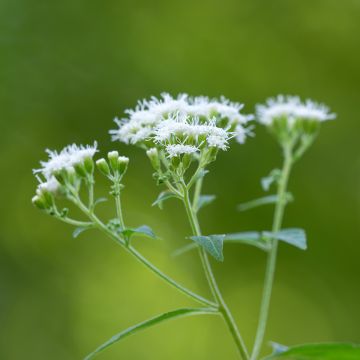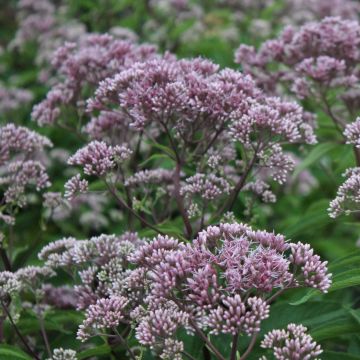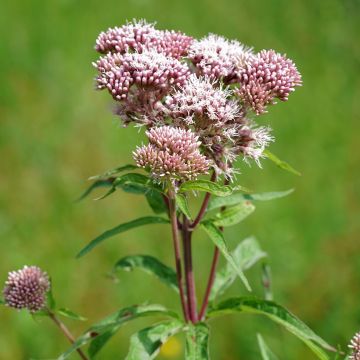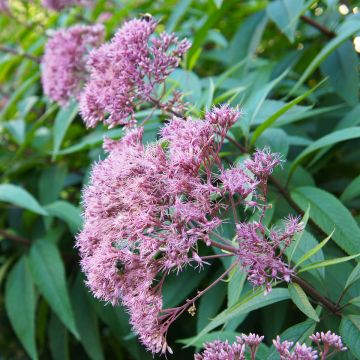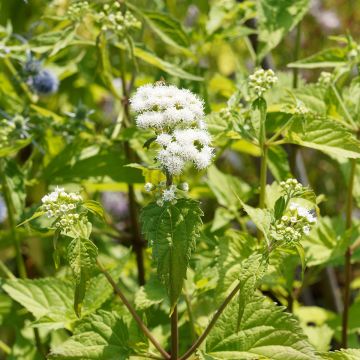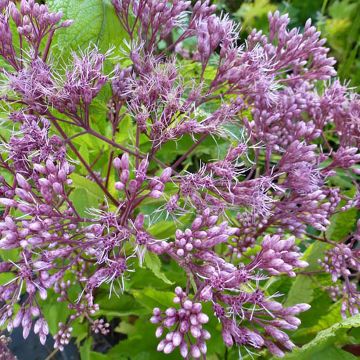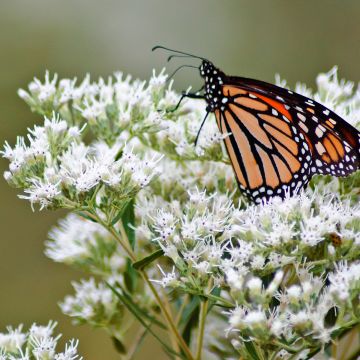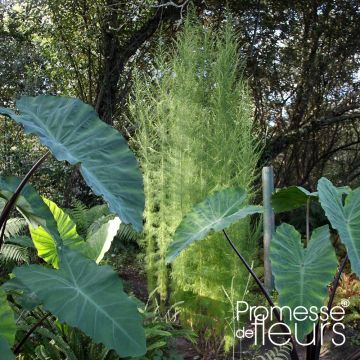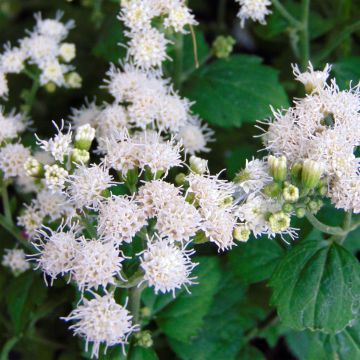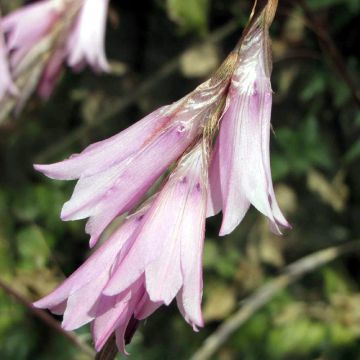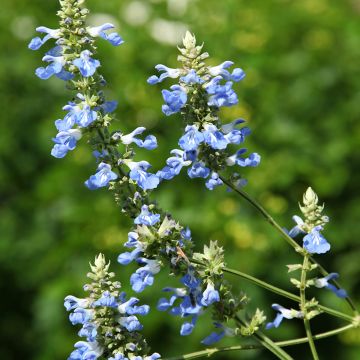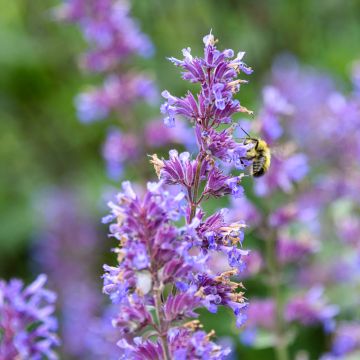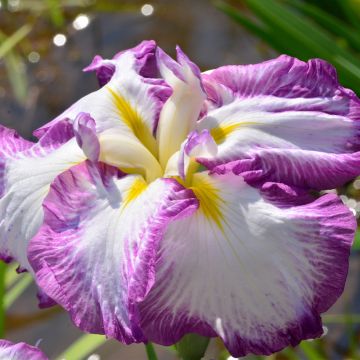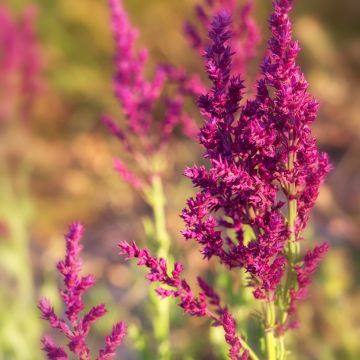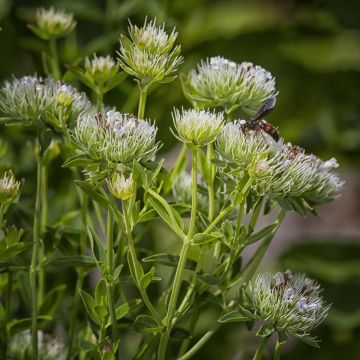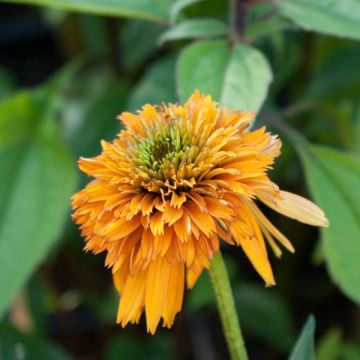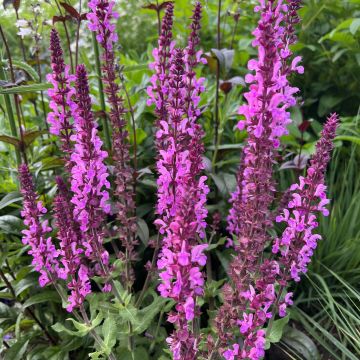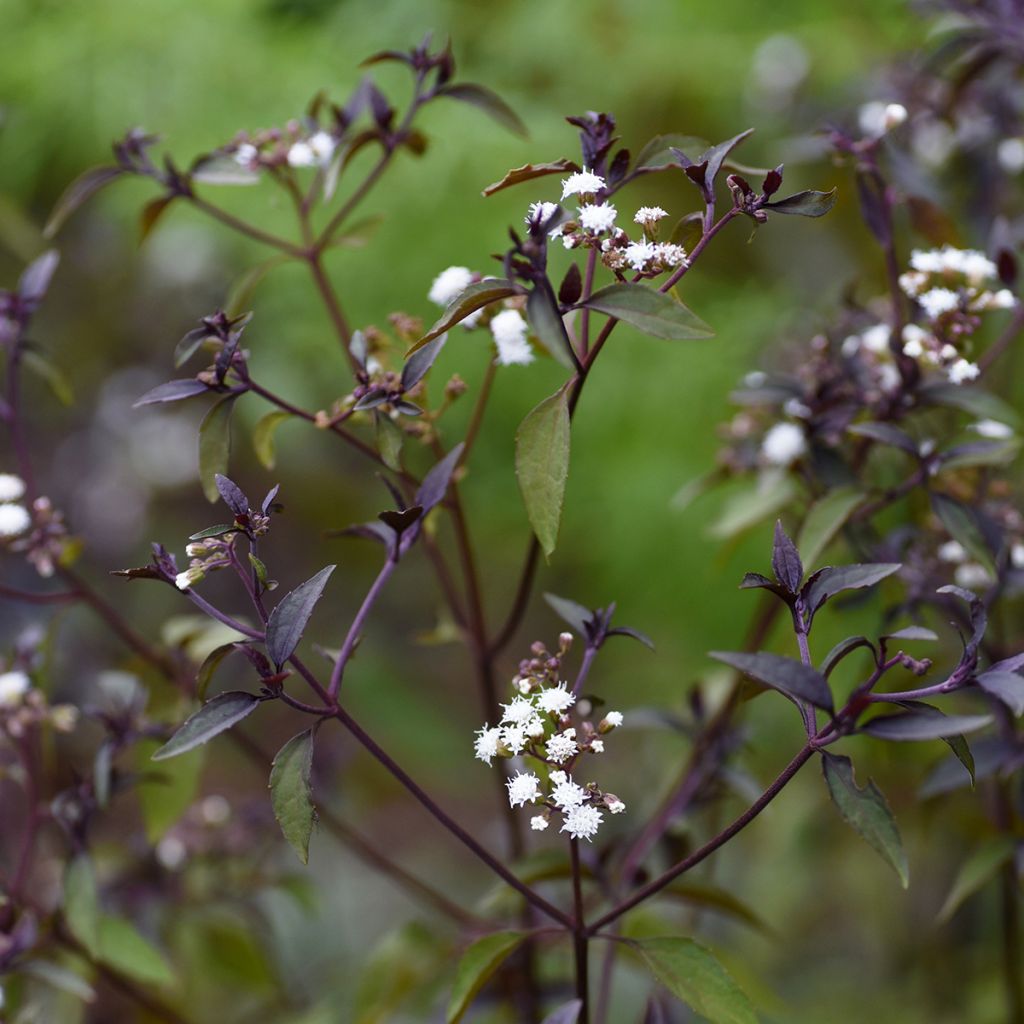

Eupatorium rugosum Chocolate
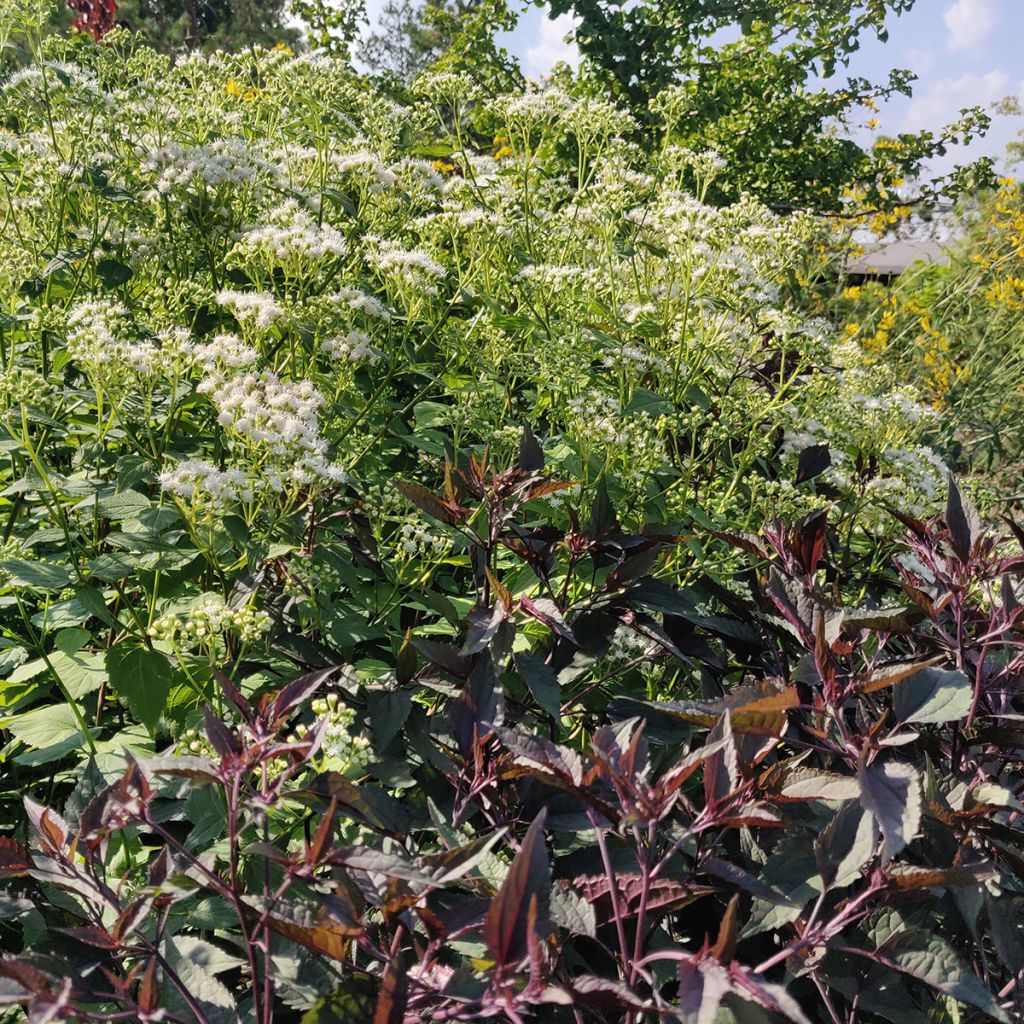

Eupatorium rugosum Chocolate
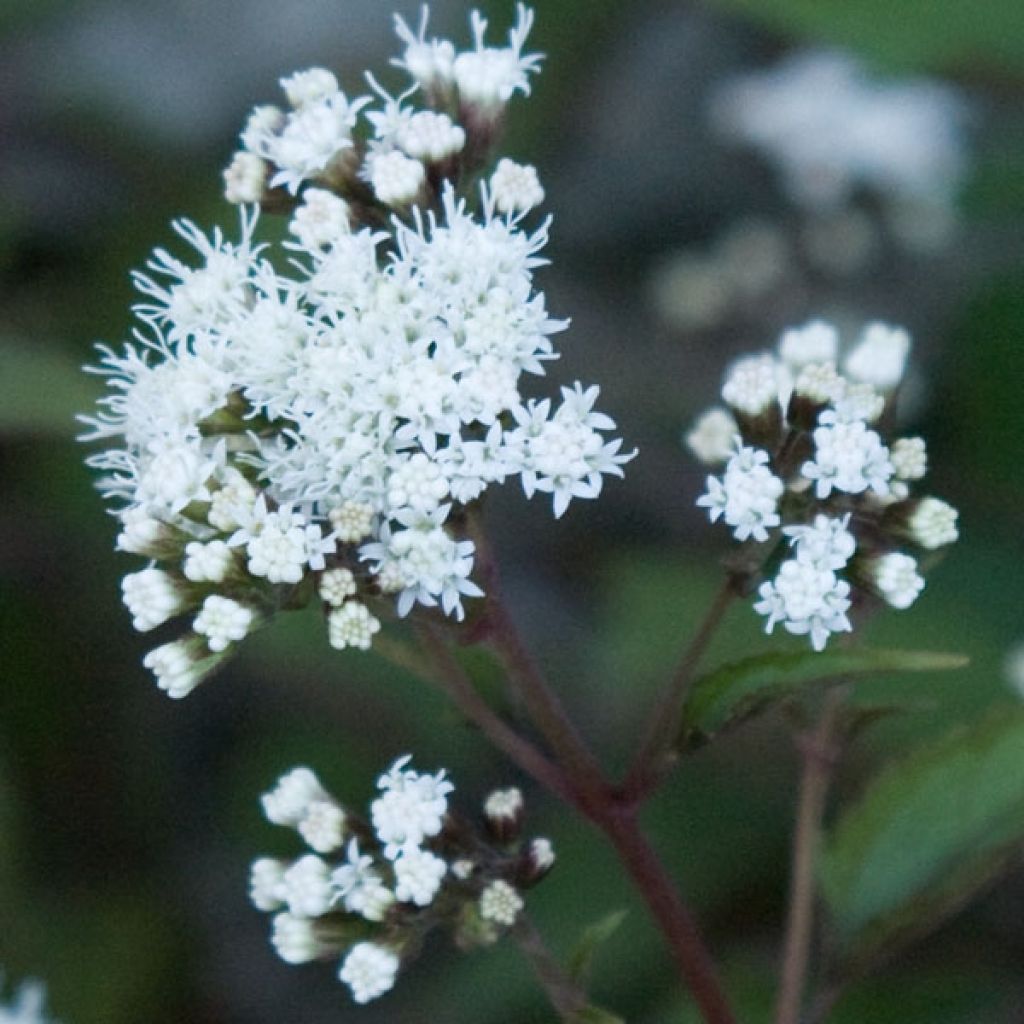

Eupatorium rugosum Chocolate
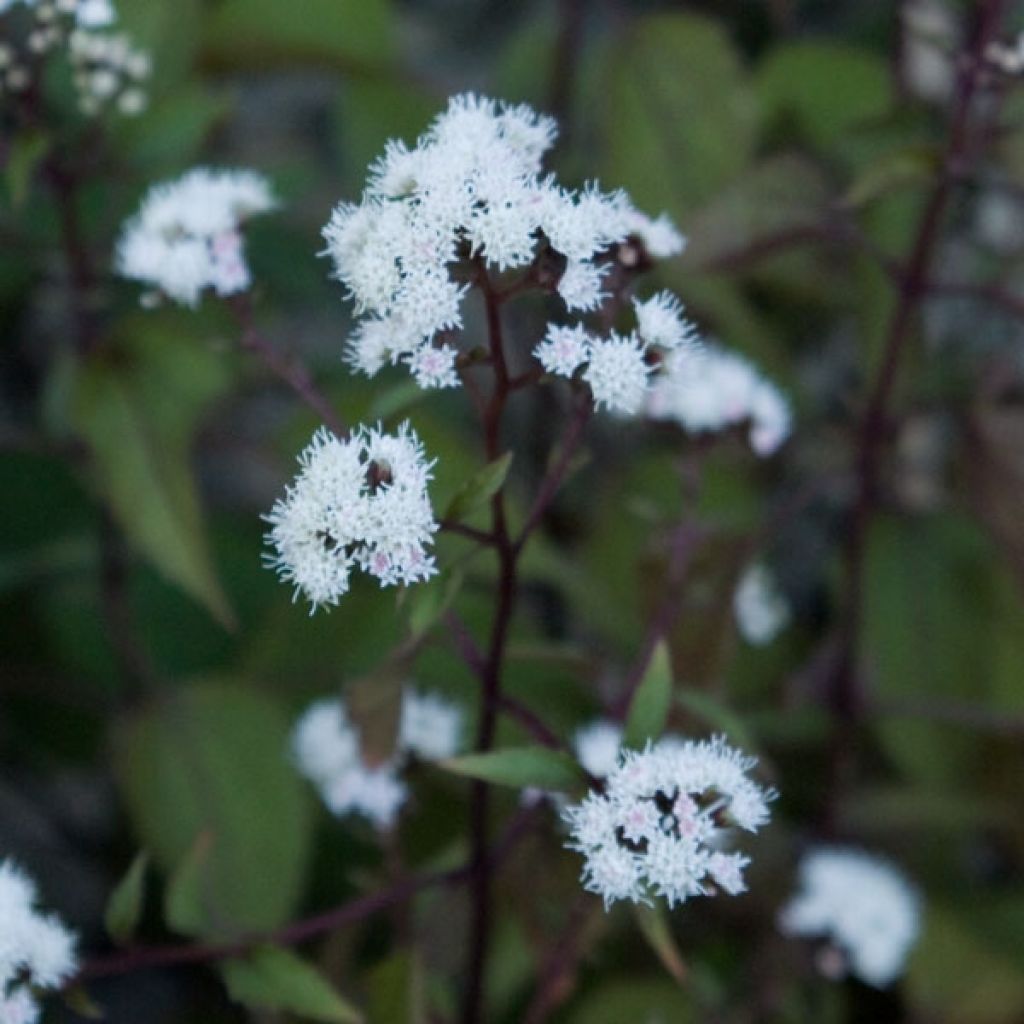

Eupatorium rugosum Chocolate
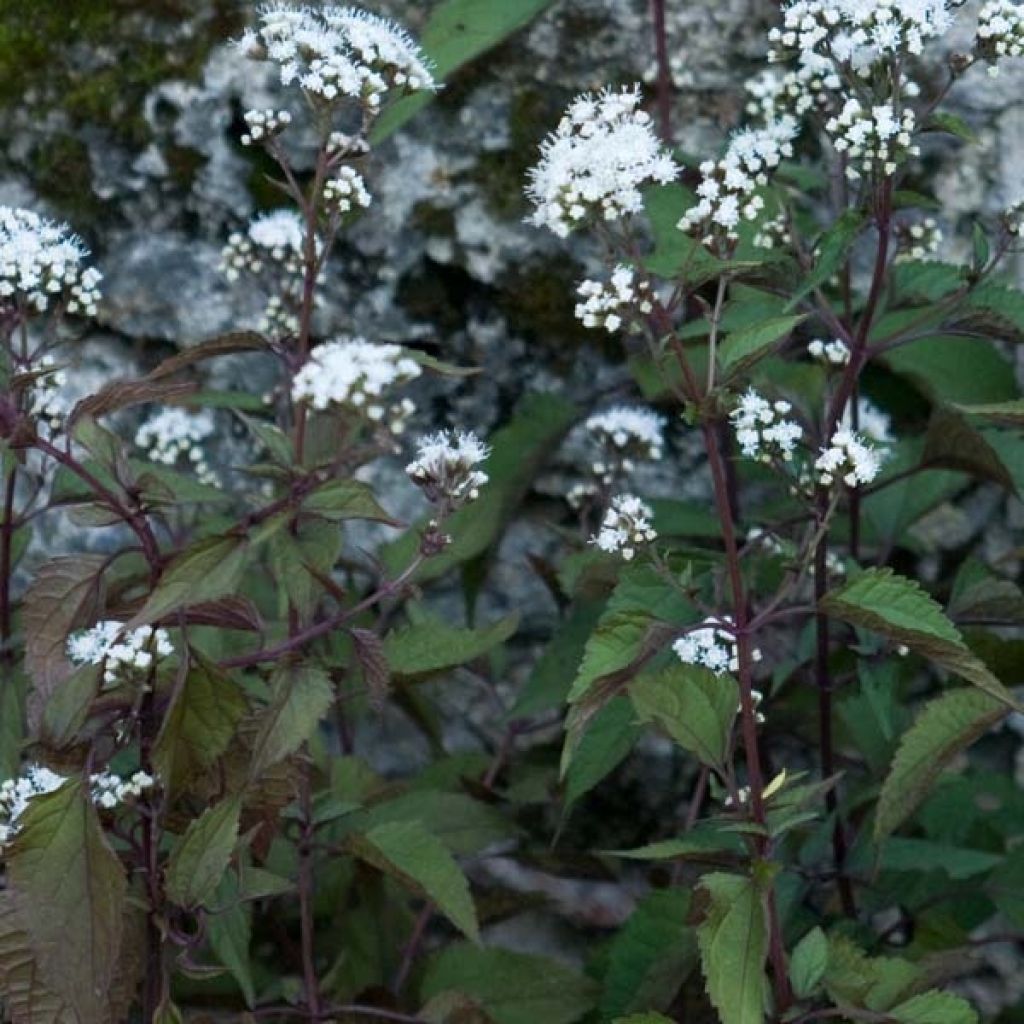

Eupatorium rugosum Chocolate
Eupatorium rugosum Chocolate
Eupatorium altissima Chocolate
White Snakeroot
This item cannot be shipped to the selected country
Delivery charge from €5.90
Delivery charge from €5.90
More information
Schedule delivery date,
and select date in basket
This plant carries a 12 months recovery warranty
More information
We guarantee the quality of our plants for a full growing cycle, and will replace at our expense any plant that fails to recover under normal climatic and planting conditions.
From €5.90 for pickup delivery and €6.90 for home delivery
Express home delivery from €8.90.
From €5.90 for pickup delivery and €6.90 for home delivery
Express home delivery from €8.90.
Does this plant fit my garden?
Set up your Plantfit profile →
Description
Eupatorium rugosum Chocolate, also known as Ageratina altissima Chocolate, is a variety of Eupatorium that is interesting for its opulent very dark foliage, as well as its late, white and light flowering, which is a valuable source of nectar for pollinators at this time of year. It is a perennial plant of beautiful stature, ornamental, requiring little maintenance, which thrives in a soft and loose garden soil that remains slightly moist.
Eupatorium rugosum Chocolate belongs to the Asteraceae family. Its wild ancestor is a perennial plant native to eastern North America, which thrives in wet to marshy places. A little slow to establish, this Eupatorium Chocolate eventually forms a beautiful clump that can reach 1.20m (4ft) in height when flowering, with a spread of 70cm (28in). Its above-ground vegetation is deciduous, emerging from the ground in spring and drying up at the end of autumn. The foliage of Ageratina 'Chocolate' takes on shades of brown-purple from June-July to September, then becomes greener during flowering. This foliage is composed of large leaves measuring 4 to 12cm (2 to 5in) long. It reaches its full size and wonderful coloration in full sun. The flowering usually starts in late September and continues into October. It takes the form of small white flowers grouped in light corymbs, measuring 4 to 6cm (2in) in diameter, carried on purple stems. It is a very hardy plant. However, the young spring shoots are sensitive to frost.
This Chocolate Eupatorium can be placed both as a specimen plant or in the back of a border. It can also be planted in flower beds and its flowers can be used for making bouquets. This tall perennial forms beautiful associations with autumn asters, golden or very light foliage for contrasting colours. It is a plant that delights butterflies.
According to tradition, Eupatorium is a magical plant that brings love and seduction. We haven't tried it. It is also the herb of Saint Cunegonde, an Empress of Germany from the 11th century, saint and healer.
Report an error about the product description
Eupatorium rugosum Chocolate in pictures
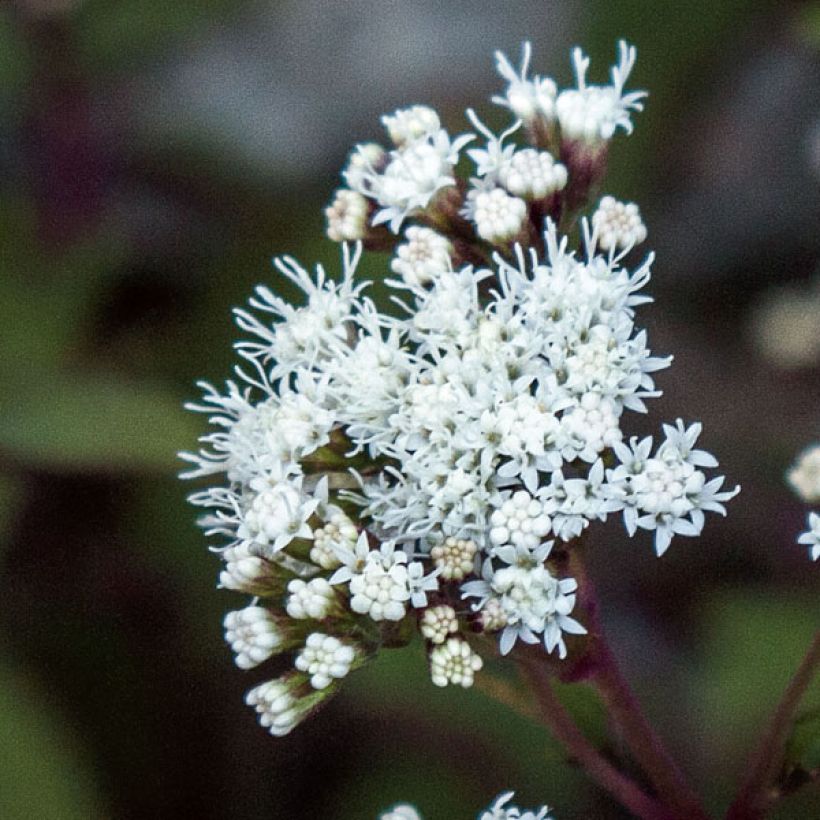

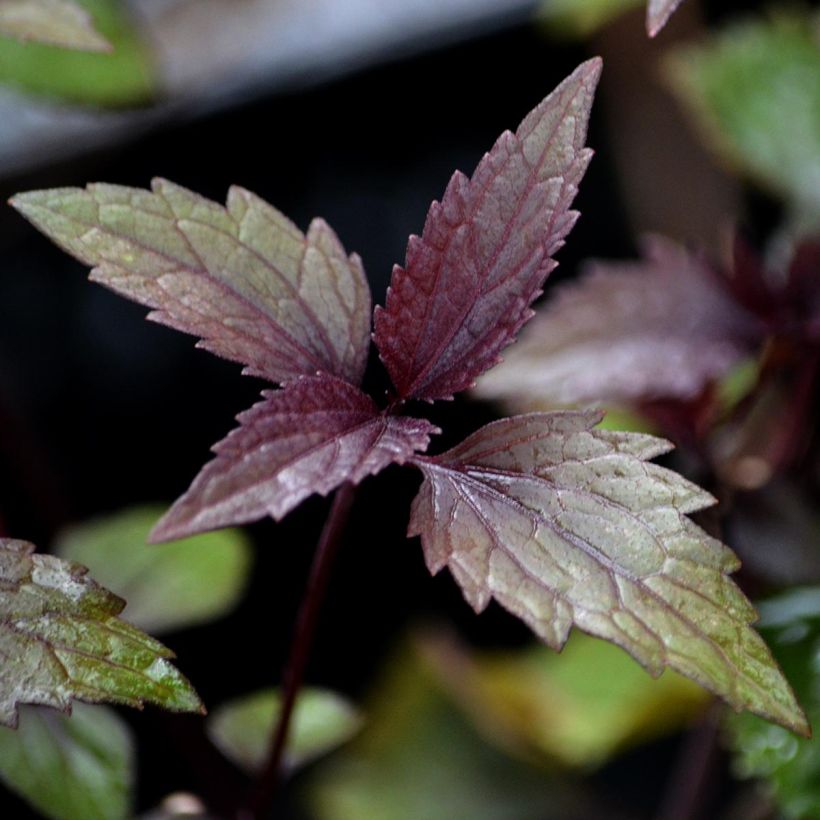



Flowering
Foliage
Plant habit
Botanical data
Eupatorium
altissima
Chocolate
Asteraceae
White Snakeroot
Cultivar or hybrid
Other Eupatorium - Boneset
Planting and care
Eupatorium rugosum Chocolate thrives in full sun as well as partial shade, but its foliage will be more colourful in the sun. Plant it in ordinary soil, even limestone, that is always slightly damp, but not clay (add compost to the planting soil). It is a water-hungry plant. Water it generously during the growing season if necessary, as it wilts quickly when it is hot and dry. Remove faded flowers to prolong its flowering. After flowering, lightly prune the stems that compromise its symmetry. Prune dry vegetation in late winter.
Planting period
Intended location
Care
-
, onOrder confirmed
Reply from on Promesse de fleurs
Summer flowering perennials
Haven't found what you were looking for?
Hardiness is the lowest winter temperature a plant can endure without suffering serious damage or even dying. However, hardiness is affected by location (a sheltered area, such as a patio), protection (winter cover) and soil type (hardiness is improved by well-drained soil).

Photo Sharing Terms & Conditions
In order to encourage gardeners to interact and share their experiences, Promesse de fleurs offers various media enabling content to be uploaded onto its Site - in particular via the ‘Photo sharing’ module.
The User agrees to refrain from:
- Posting any content that is illegal, prejudicial, insulting, racist, inciteful to hatred, revisionist, contrary to public decency, that infringes on privacy or on the privacy rights of third parties, in particular the publicity rights of persons and goods, intellectual property rights, or the right to privacy.
- Submitting content on behalf of a third party;
- Impersonate the identity of a third party and/or publish any personal information about a third party;
In general, the User undertakes to refrain from any unethical behaviour.
All Content (in particular text, comments, files, images, photos, videos, creative works, etc.), which may be subject to property or intellectual property rights, image or other private rights, shall remain the property of the User, subject to the limited rights granted by the terms of the licence granted by Promesse de fleurs as stated below. Users are at liberty to publish or not to publish such Content on the Site, notably via the ‘Photo Sharing’ facility, and accept that this Content shall be made public and freely accessible, notably on the Internet.
Users further acknowledge, undertake to have ,and guarantee that they hold all necessary rights and permissions to publish such material on the Site, in particular with regard to the legislation in force pertaining to any privacy, property, intellectual property, image, or contractual rights, or rights of any other nature. By publishing such Content on the Site, Users acknowledge accepting full liability as publishers of the Content within the meaning of the law, and grant Promesse de fleurs, free of charge, an inclusive, worldwide licence for the said Content for the entire duration of its publication, including all reproduction, representation, up/downloading, displaying, performing, transmission, and storage rights.
Users also grant permission for their name to be linked to the Content and accept that this link may not always be made available.
By engaging in posting material, Users consent to their Content becoming automatically accessible on the Internet, in particular on other sites and/or blogs and/or web pages of the Promesse de fleurs site, including in particular social pages and the Promesse de fleurs catalogue.
Users may secure the removal of entrusted content free of charge by issuing a simple request via our contact form.
The flowering period indicated on our website applies to countries and regions located in USDA zone 8 (France, the United Kingdom, Ireland, the Netherlands, etc.)
It will vary according to where you live:
- In zones 9 to 10 (Italy, Spain, Greece, etc.), flowering will occur about 2 to 4 weeks earlier.
- In zones 6 to 7 (Germany, Poland, Slovenia, and lower mountainous regions), flowering will be delayed by 2 to 3 weeks.
- In zone 5 (Central Europe, Scandinavia), blooming will be delayed by 3 to 5 weeks.
In temperate climates, pruning of spring-flowering shrubs (forsythia, spireas, etc.) should be done just after flowering.
Pruning of summer-flowering shrubs (Indian Lilac, Perovskia, etc.) can be done in winter or spring.
In cold regions as well as with frost-sensitive plants, avoid pruning too early when severe frosts may still occur.
The planting period indicated on our website applies to countries and regions located in USDA zone 8 (France, United Kingdom, Ireland, Netherlands).
It will vary according to where you live:
- In Mediterranean zones (Marseille, Madrid, Milan, etc.), autumn and winter are the best planting periods.
- In continental zones (Strasbourg, Munich, Vienna, etc.), delay planting by 2 to 3 weeks in spring and bring it forward by 2 to 4 weeks in autumn.
- In mountainous regions (the Alps, Pyrenees, Carpathians, etc.), it is best to plant in late spring (May-June) or late summer (August-September).
The harvesting period indicated on our website applies to countries and regions in USDA zone 8 (France, England, Ireland, the Netherlands).
In colder areas (Scandinavia, Poland, Austria...) fruit and vegetable harvests are likely to be delayed by 3-4 weeks.
In warmer areas (Italy, Spain, Greece, etc.), harvesting will probably take place earlier, depending on weather conditions.
The sowing periods indicated on our website apply to countries and regions within USDA Zone 8 (France, UK, Ireland, Netherlands).
In colder areas (Scandinavia, Poland, Austria...), delay any outdoor sowing by 3-4 weeks, or sow under glass.
In warmer climes (Italy, Spain, Greece, etc.), bring outdoor sowing forward by a few weeks.

































